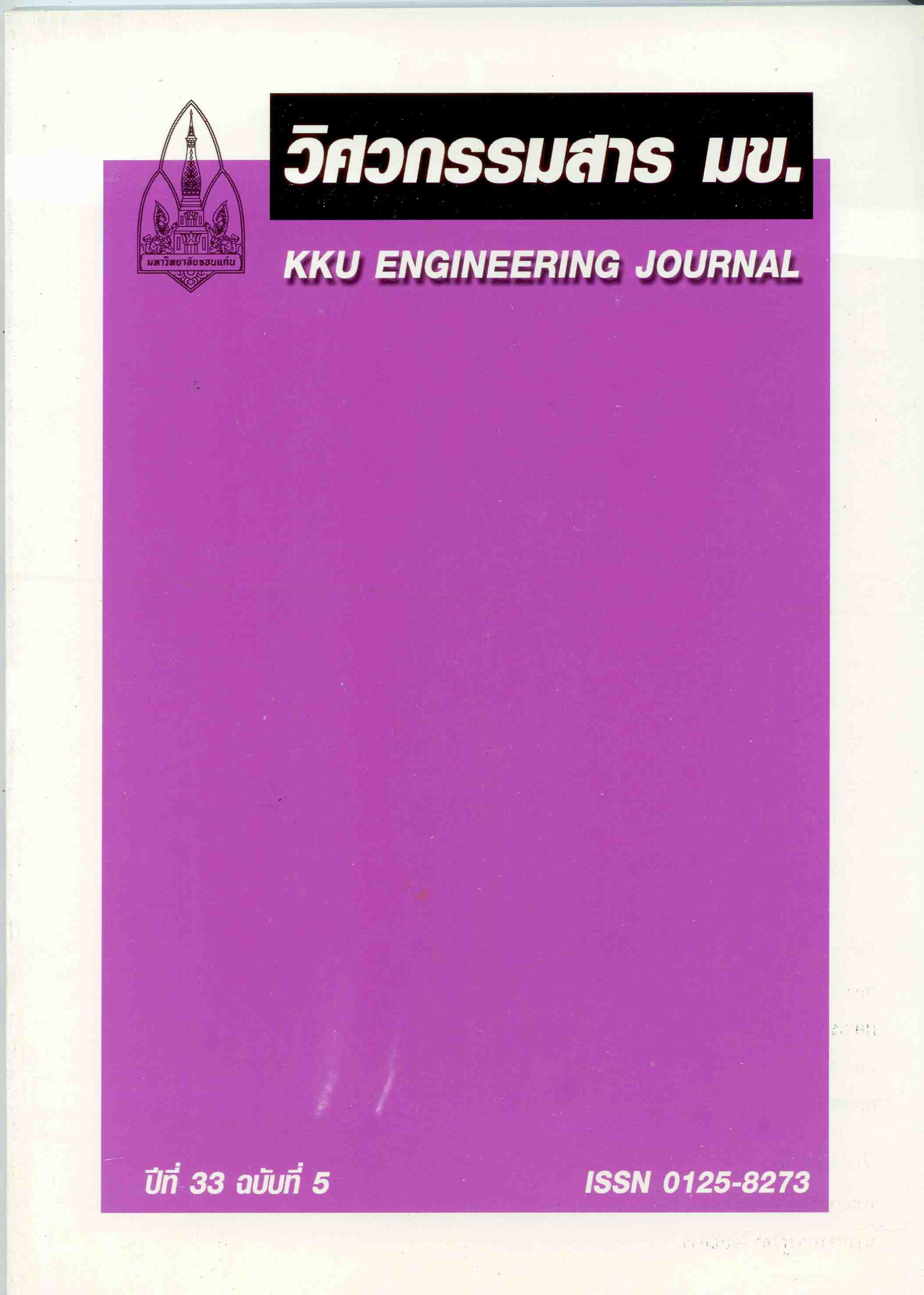Durability of Kaolin Stabilized by Polymerization Technique
Main Article Content
Abstract
This research investigated the durability of kaolin stabilized by polymerization technique using
sodium hydroxide reacts with aluminosilicate in kaolin which produces the products with higher
strength. Kaolin in 5 types : Suratthani, Lamphang, Prachinburi, Uttradit and Ranong provinces were
used throughout this work. Kaolin was mixed with sodium hydroxide at 8 and 10 percents. Mixing
water for each mix was obtained from modified proctor test. Then the samples were prepared by static
compaction at 15 MPa. and 19 MPa. respectively. Testing was observed in 3 states : reference state,
natural state and artificial state by accelerated weathering testers with UVA-340 fluorescent lamp for
strength tests at 3, 7, 14, 28, 60, 90, 180 and 270 days. The analysis of main oxide contents in kaolin
consisted of silica, alumina, and iron oxide respectively. Unconfined compressive strength of kaolin
from Ranong, Suratthani and Uttradit have higher strength when change solution of sodium hydroxide
from 8 to 10 percent. Otherwise, unconfined compressive strength of kaolin from Prachinburi and
Lampang have lower strength when change solution of sodium hydroxide from 8 to 10 percent. It was
found that when kaolin from every sources have more ages or more pressure, an unconfined
compressive strength gained higher strength. Also, samples which have higher age will have more
strength. For durability, the testing results shows that kaolin from Uttradit province has less durability
compared with other types. Testing by accelerated weathering machine make samples less damage
than natural state exposed by sunlight and rain.
sodium hydroxide reacts with aluminosilicate in kaolin which produces the products with higher
strength. Kaolin in 5 types : Suratthani, Lamphang, Prachinburi, Uttradit and Ranong provinces were
used throughout this work. Kaolin was mixed with sodium hydroxide at 8 and 10 percents. Mixing
water for each mix was obtained from modified proctor test. Then the samples were prepared by static
compaction at 15 MPa. and 19 MPa. respectively. Testing was observed in 3 states : reference state,
natural state and artificial state by accelerated weathering testers with UVA-340 fluorescent lamp for
strength tests at 3, 7, 14, 28, 60, 90, 180 and 270 days. The analysis of main oxide contents in kaolin
consisted of silica, alumina, and iron oxide respectively. Unconfined compressive strength of kaolin
from Ranong, Suratthani and Uttradit have higher strength when change solution of sodium hydroxide
from 8 to 10 percent. Otherwise, unconfined compressive strength of kaolin from Prachinburi and
Lampang have lower strength when change solution of sodium hydroxide from 8 to 10 percent. It was
found that when kaolin from every sources have more ages or more pressure, an unconfined
compressive strength gained higher strength. Also, samples which have higher age will have more
strength. For durability, the testing results shows that kaolin from Uttradit province has less durability
compared with other types. Testing by accelerated weathering machine make samples less damage
than natural state exposed by sunlight and rain.
Article Details
How to Cite
Sungwornpatansakul, W., & Thitasatcha, W. (2013). Durability of Kaolin Stabilized by Polymerization Technique. Engineering and Applied Science Research, 33(5), 511–524. retrieved from https://ph01.tci-thaijo.org/index.php/easr/article/view/6014
Issue
Section
ORIGINAL RESEARCH
This work is licensed under a Creative Commons Attribution-NonCommercial-NoDerivatives 4.0 International License.



